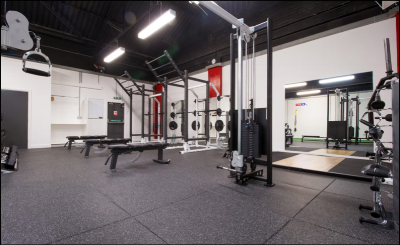Think back on the last time you bought a car...
A slick television commercial captured your attention, so you fired up the iPad and began perusing the inventory listed on AutoTrader.com. Eventually you identified one vehicle in particular that caught your eye and started kicking around the cost in your mind. The listed price seemed reasonable, so you started to get serious.
For most of us, this is how the process starts. Who doesn't enjoy imagining himself settling in behind the wheel, rolling the windows down, and cranking up some good music in a nice new ride?
Unfortunately, before you can do that, you have to get metaphorically kicked in the teeth by the dreaded (and routinely overlooked) disclaimer that is ever-so-subtly tucked into the end of the promotion: Taxes, fees and additional expenses not included.
"You said the car cost $22,700. Wait...I think I blacked out...how did we end up at $24,781?"
Sales tax? Yup, forgot about that. Registration fee? License fee? Title fee? Documentation, compliance, and emissions testing fees?
Who the hell is coming up with this stuff? Is there an oxygen consumption fee for the time I've spent in the dealership giving away a chunk of my retirement savings?
When all's said and done, you can go ahead and increase that listed price by 10% if you have any intention of making the car your own.
First-time gym ownership isn't a whole lot different...
Much like the car purchasing process, it all starts with a visual.
One minute you're a disgruntled personal trainer watching an episode of Anthony Renna's Strength Coach TV, dreaming about opening your own space. The next, you're casually scanning loop.net for commercial property to potentially serve as home base for your new business venture. (Time to stop working for the man and start making your own hours!)
Only $3 per square foot? I can handle that. Wait, what does "NNN" stand for? Never mind, I'll figure that part out later. Right now I need to focus on where I'm going to put that $4,200 Hammer Strength Leg Press I've got my eye on.
Fast-forward a half dozen property tours and an initial lease proposal and you begin to realize that this whole process isn’t as simple as multiplying the listed square footage by the dollar-per-square foot. Real estate taxes? Property insurance? Common area maintenance? Ugh.
Even if you can stomach these hurdles, don’t make the mistake of thinking that you’ve figured it all out once the lease is signed.
Did anyone tell you that your insurance provider is going to audit your business’s performance at the conclusion of the year to see how your performance aligns with the projections you provided as they drew up a coverage plan for you? Outperform that number and they’ll hit you with an adjustment fee. This stuff is starting to pile up.
Were you expecting the property manager to haul your trash away? Unlikely, my friend. Time to start getting quotes on renting a dumpster that you’ll pay to have emptied each week.
The town we operate in here at CSP Massachusetts slaps on an annual “dumpster fee” for the privilege of placing such a piece of equipment on the private property we are renting. Nice, right?
Speaking of unanticipated expenses, did you budget for your annual “personal property tax” which covers items such as the furniture and electronics you keep in your space? There goes another $400 I didn’t want to put in my own savings account.
I think you get where I’m going here...
Whether you’re purchasing a car, buying your first home, or signing that first gym lease, there’s probably a much higher cost of doing business than you ever imagined. Do your homework before you fall in love with the idea of opening your own spot. I didn’t even mention first and last month’s rent, security deposits, or the outrageous cost of flooring. You likely need more cash flow than you think.
You still sure you want to do this?
Do you enjoy my spin on fitness business concepts?
I publish my “Friday Four” newsletter at the end of each week featuring links to useful articles and insights on applying concepts from each to your own fitness business endeavors. Check it out here.




























